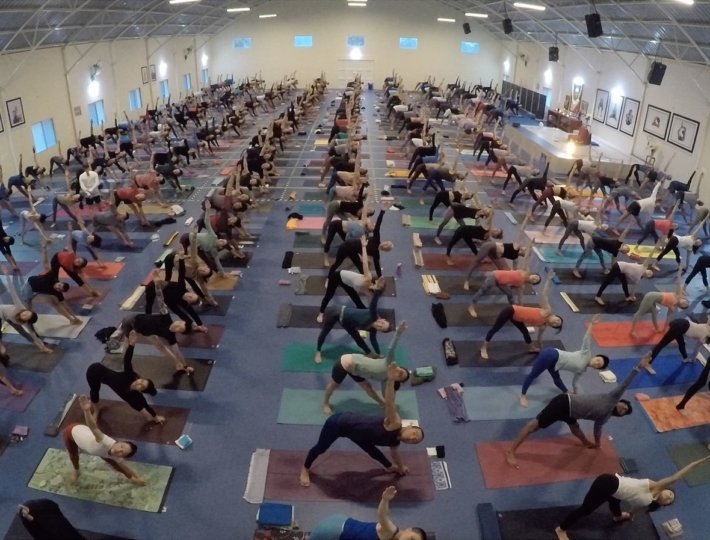In life, no matter how autonomous or independent one is, relationships are a central part of our self-concept. Newborns, for example, typically recognize their caregiver’s faces at two months, but will not recognize their own reflection until much later. We grasp the presence of other before we grasp the notion of self. Then, almost immediately, we learn how to jockey for the affection of others. In ways both dramatic and mundane, we learn how to bend our authentic selves to stay in relationship with other people. One of the smallest ways we do this is by avoiding tough conversations and saying yes when we should probably say no.
One reason it can be so hard to break from this tendency can be explained by the idea of negativity bias, or the tendency for the negative motivational system to respond more intensely than the positive motivational system. The founders of social neuroscience, John T. Cacioppo, Ph.D., and Gary Berntson, Ph.D., study the various ways our social interactions are processed biologically. In a 1998 study on negativity bias, Cacioppo showed participants pictures that were arguably negative (mutilated faces), positive (a luxury sports car), and neutral (household appliances). He discovered that the brain responds more strongly to negative feedback and stimuli. In fact, negative information is processed in a different part of the brain with a stronger electrical charge. This natural inclination for negative information to resonate more strongly points to lots of occurrences in our everyday lives including: why bad news goes viral, why we tend to hold our tongues and avoid confrontation, and why many of us have a hard time saying no. In short, our desire to avoid saying no and giving negative feedback could be because we know, both emotionally and neurologically, negative feedback hurts.
Related: The Pitfalls of Pursuing Your Purpose
Roy Baumeister, Ph.D., a researcher of self and identity and a professor of social psychology at Florida State University, provides an exhaustive exploration of how this negativity bias effects our interactions. In an article, “Bad is Stronger than Good,” he writes, “In everyday life, bad events have stronger and more lasting consequences than comparable good events. Close relationships are more deeply and conclusively affected by destructive actions than by constructive ones, by negative communications than positive ones, and by conflict than harmony…Even outside of close relationships, unfriendly or conflictual interactions are seen as stronger and have bigger effects than friendly, harmonious ones. Bad moods and negative emotions have stronger effects than good ones on cognitive processing, and the bulk of affect regulation efforts is directed at escaping from bad moods (e.g., as opposed to entering or prolonging good moods).”
Even in the face of our own neurological bias, we can’t let our brain’s desire to perceive things negatively govern all of our decisions. “It’s in our best interest, if we are walking along a trail, for our brains to perceive the stick as a snake. This helps us avoid potentially dangerous situations,” says Rebecca Gladding, M.D., author of You Are Not Your Brain.
Negativity bias developed as a defense mechanism, Gladding explains, and our brains’ habit of processing negative stimuli so strongly is actually a clever evolutionary function—a way to help us perceive and avoid danger. However, we must work to keep things in perspective. Saying no to a loved one isn’t a dangerous proposition. Rejecting an offer, or providing feedback that our loved one might perceive as less flattering won’t kill them (or us). However we don’t often make that distinction. We generally avoid discomfort and danger, with the same fervor, whether it is real or imagined.
“We’re going to have initial reactions,” Gladding says. “But we can stop and remind ourselves [that] that’s just our brain.”
Meditation is one of the most effective ways to interrupt our brain’s feedback loop.
“At the clinical level, meditation is meant to enhance awareness,” Gladding says. “The goal is to build that muscle so that we can use our increased awareness in our daily lives.”
In an article called, “This is Your Brain on Meditation,” Gladding breaks down how mediation helps rewire the brain and enhance our awareness. She writes:
“If you were to look at people’s brains before they began a meditation practice, you would likely see strong neural connections within the Me Center [medial prefrontal cortex] and between the Me Center [Ventromedial medial prefrontal cortex and Dorsomedial Prefrontal Cortex] and the bodily sensation/fear centers of the brain. This means that whenever you feel anxious, scared or have a sensation in your body (e.g., a tingling, pain, itching, whatever), you are far more likely to assume that there is a problem (related to you or your safety)…In contrast, if you meditate on a regular basis, several positive things happen. First, the strong, tightly held connection between the Me Center (specifically the unhelpful vmPFC) and the bodily sensation/fear centers begins to break down. As this connection withers, you will no longer assume that a bodily sensation or momentary feeling of fear means something is wrong with you or that you are the problem!”
Through regular mindfulness meditation practice, we become less self-centered and our inclination to catastrophize events decreases. As we minimize our internal narratives about what’s happening, we are more likely to assess situations more clearly, and communicate our needs more effectively. We understand that having more authentic and honest conversations with the people in our lives, isn’t an overwhelmingly dire situation. As we learn that the world revolves without us, we become free to share and express our needs and feelings.
Related: Opening Yourself to the Serendipity of Chance
Our success with this, however, also hinges on the people that we’re interacting with.
“Saying no, and giving negative feedback are two very different things…but both come down to how safe a person feels, “ Gladding says. “The more you have relationships with people who value your feelings, the more comfortable you will feel sharing.”
So, assuming that we’re regular meditators, and we have emotionally mature relationships, how can we feel safe enough to pass on the invitation to our best friend’s birthday party? How can we feel comfortable enough in our relationship to tell our boss that we really don’t like when he calls us “sweetie” during meetings? How can we set boundaries for ourselves in ways that other people can hear them?
“The way we say things matters,” Gladding says.
While it may seem easiest to blurt our feelings simply and quickly, consider when and how the person you’re looking to communicate with will perceive your feedback. If you’re saying no, choose a time and space where the person will be most receptive (not after they’ve just worked a double shift at the hospital). It’s also important to recognize that what you perceive as negative feedback, isn’t inherently negative.
“If you’re telling someone something that is factual, that’s not negative feedback,” Gladding says. “If you have the expectation of change based on your feedback, that’s generally where the problem occurs.”
“This is another place where meditation comes in,” Gladding adds. “We can recognize when we have an expectation.”
Ultimately a relationship is a two-way street, and part of being able to say no and communicate unfavorable feedback, is also being able to hear it.
“See any feedback as a gift,” Gladding says. “And when you feel yourself bracing or reacting to negative feedback, try to be inquisitive. Often it’s just miscommunication.”She adds, “Thinking about all of the great Buddhist teachings communicate: See everyone as a teacher. Everyone is my teacher.”
That said, Gladding also cautions us to keep feedback in perspective. Though everyone is our teacher, we are well within our right to challenge our teachers.
“The majority of other people’s behaviors have nothing to do with you,” she says. “Make sure you put all feedback in context, and consider debriefing with someone you trust.”
Related: Balancing the Voices of Intuition and Logic
One of the greatest paradoxes of relationship is that sometimes the most loving thing we can do is say no. Sometimes, the best way to support someone we care about is to tell them a potentially uncomfortable truth. Often, when we set boundaries, affirm our own intentions, stick to our guns or tell our truth, we inadvertently free those we love the most to make more informed and honest decisions. The theologian Tim Keller writes, “To be loved but not known is comforting but superficial. To be known and not loved is our greatest fear. But to be fully known and truly loved is, well, a lot like being loved by God. It is what we need more than anything. It liberates us from pretense, humbles us out of our self-righteousness, and fortifies us for any difficulty life can throw at us.”
When we learn to hold the people in our lives accountable and allow them the same freedoms with us, we open ourselves up to true union, and we create a safe place for our truest nature to reside.









Comments (0)